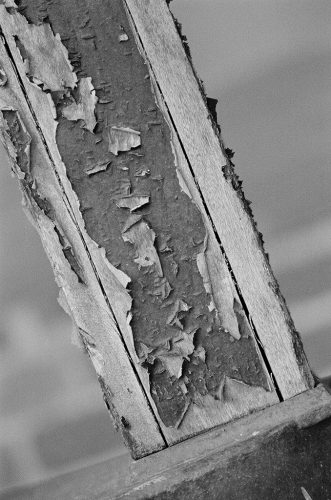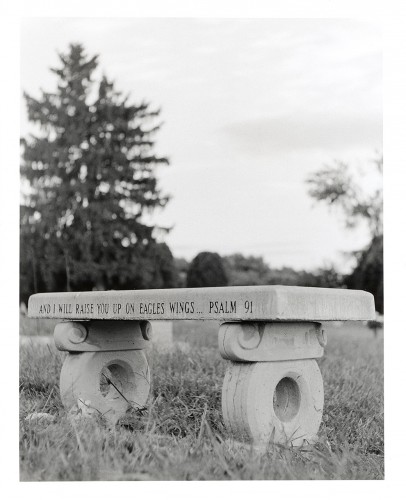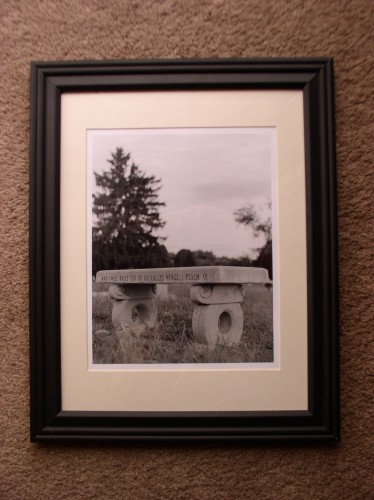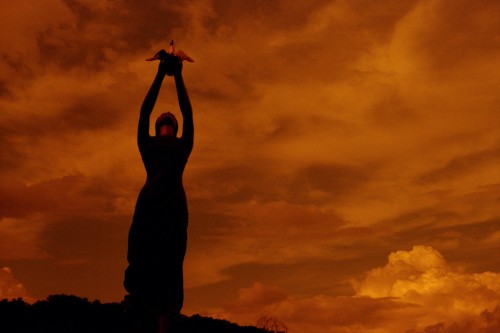 It’s been a while since I last posted anything here. No posts, no gallery updates, no nothing. Two and a half years, more or less.
It’s been a while since I last posted anything here. No posts, no gallery updates, no nothing. Two and a half years, more or less.
The good news is, I’ve not been idle in the photography department. The bad news is I’ve not been idle anywhere much else, either!
So what’s been going on, anyway, besides the rust and peeling paint?
Printing. I’ve done a lot of this, which is great. My earlier described LED lightsource has been a faithful servant and combined with primary green and blue cinematic filter gels under the lamp, I’ve made a number of pleasing split grade prints.
LED. The bigger news is that I’ve been working alongside a UK-based hardware engineer and darkroom printer to develop a complete controller and lightsource system using red, green and blue high LED modules. This allows full control over contrast grade, and a completely paper-safe view of the projected image when not exposing. It’s still in prototype stage, but well on the way to being completed! I started out with a prototype made of cardboard, using the existing condenser system, but have since rebuilt it in a wooden box and switched over to running it as a diffuse light source. This has been my primary printing method for a good year and a half.
Liquidol. I tried a bottle of Formulary Liquidol for my printing. As it turns out, the working solution, long lived as it is, still wasn’t long lived enough to deal with my somewhat sporadic darkroom efforts. Liquidol is a lovely developer, but better suited to a more regular throughput, or for darkroom users who don’t print often, but do long sessions with many prints when they do.
Ansco 130. My original working solution, mixed from powders in September 2013, was still active as of this June, last time I printed. I’d been replenishing it every session from full strength stock, but that ran out some time ago. I will be getting more, this developer is perfect for how I work!
Cameras and formats. I got into the Pentax 645 system, and use that camera almost exclusively now. With a 45, 75 and 150mm lens, a couple of filters, 3 film inserts, and some closeup filters, it’s a very complete system which has been giving me great photos in a wide range of situations, from shooting landscapes on a tripod, to handheld shots at an air show. I’d love to add the 300mm and 35mm lenses to the bag, and replace the original manual focus 645 body with a newer 645N which has much better ergonomics. But it’s a solid, reliable system I’m happy with. I still have the Yashica TLR, along with a 1936 Voigtlander Brillant and 1926 Ansco Goodwin box camera, all in medium format. In 35mm, I still have the Canon F1 but don’t shoot it much. My old Vista View 35 plastic camera had a shutter failure. I found an Olympus XA, which for a couple of years was the only reason I even shot any 35mm at all; sadly, a couple of months ago it had a (common) electrical failure in which the self timer cannot be disengaged. A 10 second shutter lag means the camera is of no further use to me for the type of shooting it excelled in. Sadly missed. I also found a Canon EOS Rebel X with 35-80mm mk.III kit lens, it’s a good little camera and might yet vie with the F1 for the “smaller, faster” type of shooting. I just don’t do that much, though. And I MUCH prefer handling medium format film, both for scanning and enlarging.
Large format. Ha, fooled you! I have not, yet, succumbed to any urge to go to 4×5 large format. But I do have a plan for how I might upgrade my enlarger for it. Just in case, you know? Only the Pentax 645’s overall competence is saving me, I suspect.
Move. In July, we moved home, and so the quest to make a regular room into a working darkroom is on, again. It’s taken until now just to get the room habitable again, but plans are afoot for darkroom use. I do indeed plan to document this process right here.\
Fiber and other art papers. I took the plunge into printing on fiber base paper and it wasn’t as scary as it sounded. Adox MCC-110, Ilford MGFB Classic (glossy) are very nice papers which dry decently flat without much extra effort beyond hanging them up for a couple of days and then flattening them under something heavy for a couple more days. My favorite, however, is Ilford’s Art300 cotton rag base. Takes less washing, has a pleasing eggshell/semi-matte finish which manages to combine both high DMAX and easy retouching (diluted India Ink for spotting, can even scrape off emulsion to remove small dark spots, can use pencil and colors easily also. Washing FB papers has been in-tray, by multiple changes of water, one print per tray. I’d still like to make some sort of washer, but it’s not critical.
Gallery. I’ve been printing, which means I have updates for the gallery to follow shortly.
Digital. We (as in my wife and I) finally replaced the ageing and much-dropped Olympus with a “proper” digital camera – a Sony SLT-A33. Uses the existing Minolta A-mount lenses she had, and the SLT cameras play well to the strengths of digital in being able to live-view focus at 100%, and preview the exposure and DOF in the viewfinder. As much as I love film, and manual focus cameras, our grandkids move too fast for me! Also, I do like color print film’s tonal characteristics, but it’s kind of a pain to deal with when I just want some competent snapshots, or if I find myself shooting an event of some sort (which has happened a handful of times).
See, I’m not just some film-only elitist snob! I’ll shoot digital when it makes sense to, we just didn’t have any digital camera that was up to doing it properly until the Sony.
Anyway, thanks for reading, and my sincerest apologies for the long break. I plan to write more here and use it as my primary place for sharing my photographic work.
 The existing MGIV fiber base product is being replaced by a new, improved version called Multigrade FB Classic with shorter exposure times and better responsiveness to toning compared to the MGIV FB papers it replaces. An all new cool tone paper, Multigrade FB Cooltone, is being added to the lineup. Meanwhile, the existing Multigrade FB Warmtone will remain unchanged. Ilford Photo now have a complete fiber-base paper lineup which affords a great deal of control over the final image through choice of paper and toning options. Fantastic!
The existing MGIV fiber base product is being replaced by a new, improved version called Multigrade FB Classic with shorter exposure times and better responsiveness to toning compared to the MGIV FB papers it replaces. An all new cool tone paper, Multigrade FB Cooltone, is being added to the lineup. Meanwhile, the existing Multigrade FB Warmtone will remain unchanged. Ilford Photo now have a complete fiber-base paper lineup which affords a great deal of control over the final image through choice of paper and toning options. Fantastic!

